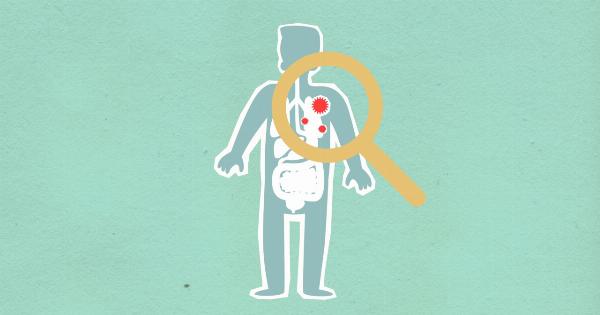Human beings have always been fascinated by the idea of living longer and healthier lives. While lifespan is certainly influenced by genetic factors, numerous other aspects also play a crucial role in determining how long an individual may live.
From lifestyle choices to environmental factors, uncovering the secrets to longevity has been an ongoing pursuit for scientists and researchers worldwide. In this article, we delve into the various factors that contribute to lifespan, offering insights into how we can potentially extend our time on this planet.
Genetic Determinants
It is impossible to discuss lifespan without acknowledging the role genetics play in our overall longevity. Certain genetic variations and mutations can have a profound impact on how our bodies age and function.
These genetic determinants range from susceptibility to certain diseases to the ability to repair DNA damage and maintain cellular health. Researchers have identified several genes that are directly associated with lifespan, such as the FOXO3A gene, which is known to be involved in the regulation of aging processes.
Lifestyle and Behavior
Lifestyle choices and behaviors have a significant influence on our overall health and lifespan. Factors such as diet, exercise, smoking, alcohol consumption, and sleep patterns can either promote or hinder longevity.
A well-balanced diet, rich in nutrients and antioxidants, is crucial for maintaining cellular health and reducing the risk of chronic diseases. Regular physical activity not only keeps our bodies fit but also helps prevent age-related decline. On the other hand, smoking and excessive alcohol consumption have been linked to a higher risk of various health conditions and reduced lifespan.
Social and Economic Factors
Social and economic factors can indirectly impact an individual’s lifespan. Access to quality education, healthcare, and a safe living environment are vital determinants of overall well-being and longevity.
Socioeconomic inequality and poverty can limit individuals’ ability to pursue a healthy lifestyle and receive proper medical care, consequently reducing their lifespan. Strong social connections and a sense of belonging are also associated with a longer lifespan, as they provide emotional support and reduce stress levels.
Environmental Influences
The environment in which we live plays a significant role in our health and lifespan. Exposure to pollution, toxins, and hazardous substances can contribute to the development of various diseases and reduce life expectancy.
Additionally, the quality of air, water, and food available in a particular region can also impact lifespan. Living in areas with high levels of environmental pollution has been linked to a higher risk of respiratory diseases, cancer, and cardiovascular problems, ultimately shortening lifespan.
Psychological Factors
Psychological factors, such as stress, mental health, and personality traits, can affect lifespan. Chronic stress has been shown to cause a multitude of health issues, including cardiovascular disease and immune system dysfunction.
Depression and anxiety have also been associated with a shorter lifespan. On the other hand, individuals with a positive outlook, strong coping mechanisms, and resilient personalities tend to live longer and experience better overall health.
Access to Healthcare
The availability and accessibility of healthcare services greatly impact lifespan. Regular check-ups, disease prevention measures, and early detection of illnesses can significantly improve health outcomes and extend lifespan.
Adequate access to healthcare professionals, medications, and advanced medical treatments can also enhance survival rates when faced with severe health conditions. Disparities in healthcare access can lead to differential lifespans among different populations, highlighting the importance of equitable healthcare systems.
Education and Intellectual Stimulation
Continuing education and intellectual stimulation have been linked to a longer lifespan.
Engaging in activities that challenge the brain, such as reading, learning, and problem-solving, help maintain cognitive function and reduce the risk of age-related cognitive decline. Higher levels of education are associated with better health outcomes and increased lifespan, possibly due to a greater understanding of health-related information and improved decision-making regarding lifestyle choices and healthcare utilization.
Income and Economic Security
Income and economic security are closely tied to health and life expectancy. Financial stability allows individuals to access quality healthcare, afford healthier food options, and live in safer neighborhoods.
Economic disparities can lead to limited options for healthy living and increased exposure to stressors, resulting in a shorter lifespan.
Gender and Biological Factors
Biological differences between genders impact lifespan. While women generally tend to live longer than men, this advantage is partially offset by the increased risk of certain health conditions, such as osteoporosis and autoimmune diseases.
Hormonal factors, including the protective effects of estrogen in women, influence the aging process and overall longevity. Understanding the impact of gender-specific biological factors can contribute to strategies for extending lifespan in both men and women.
Environmental Stressors and Toxins
Exposure to environmental stressors, including chemicals, pollutants, and radiation, can have detrimental effects on lifespan.
Carcinogens present in the environment can lead to the development of cancer, while exposure to radiation can cause DNA damage and mutations. Minimizing exposure to harmful substances through lifestyle choices and advocating for environmental protections are essential for promoting a longer and healthier life.
Socioeconomic Factors
Socioeconomic factors, such as wealth, income distribution, and education, have a significant impact on lifespan.
Countries with lower socioeconomic status tend to have higher mortality rates and shorter life expectancies due to limited access to healthcare and higher prevalence of chronic diseases. Addressing socioeconomic inequalities is crucial for improving overall population health and extending average lifespan.
In conclusion
While genetics undoubtedly play a role in determining lifespan, the pursuit of longevity involves multiple factors that are within our control.
By adopting a healthy lifestyle, minimizing exposure to environmental toxins, maintaining social connections, and ensuring access to adequate healthcare, we can enhance our chances of living longer, healthier lives. Understanding the interplay between genetic and environmental influences allows us to make informed choices, optimizing our chances of achieving longevity for ourselves and future generations.































